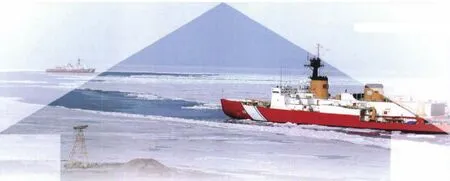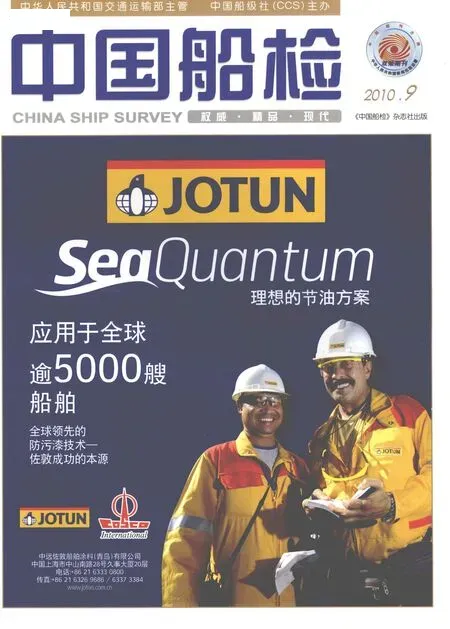Upgrading the Regulation for Polar Areas
Reporter Xu Hua

The beautiful scenery of the South Pole and the resources of the North Pole have become the reality with the thawing of icebound navigation route. They attract the attention of the world and the two polar areas are now extremely busy and no longer silent. However,the extremely worse climate and the vulnerable environment in this area pose higher requirements for the shipping management which has nearly no knowledge or experience in this area. There is an urgent need to upgrade regulations for the polar areas.
In the South Pole,there can be rain and snow,heavy fog,strong gale,iceberg and huge waves in the summer months between October and April,and it is dangerous for even the most solid ships to navigate in this area. On Nov. 23,2007,the Canadian cruise ship“the Explorer” collided with an iceberg and sank during its 19-day voyage off the Falkland Islands. Though all its 154 passengers aboard were rescued,it left on the bottom of the South Pole sea a sunken ship loaded with heavy oil and a pollution zone of 8km in length and 5km in width,which caused serious pollution to the periphery sea areas. This cruise vessel was launched in 1969 and is the first ship specializing in carrying tourists to the South Pole for sightseeing. It is also the first ship for the purpose of business voyage that sunk into the sea in the South Pole.
There is just another similar accident. One month after the sinking of “the Explorer”,another cruise vessel,“MS Fram” owned by Norway’s Hurtigruten Company had an incident while navigating in the South Pole. It collided with an iceberg after the power cut caused the failure of the engine. One lifeboat was destroyed,fortunately,more than 300 passengers were safe and there was no serious damage to the hull.
Although these two accidents involved no life losses,they rang an alarm to the ships navigating in the South Pole. According to investigation,many of the large cruise ships navigating in the South Pole adopt insuffi cient or even no measures to offset the collision with ice blocks. According to Zhong Chenkang,the Deputy Director of CCS Shanghai Rules and Research Institute,for the safety management of ships navigating in the South Pole,as early as in IMO DE51,American delegation proposed to expand application of the “Guidelines for Operation of Ships in the North Pole Sea Area Covered with Ice”(non-mandatory) to the South Pole,and the revision work has started. In the year of 2008,IMO Secretary General especially referred to the two accidents happened in the South Pole in his opening address in DE52 and required related countries to investigate the accidents and report to IMO. These accidents prompted IMO to speed up its pace of revising “Guidelines for Operation of Ships in the North Pole Sea Area Covered with Ice(MSC/Circ.1056-MEPC/Circ.399).
Due to the completion in advance of the schedule of the North Pole navigation route,IMO has brought the revision of the “guidelines for Polar areas” into the comprehensive preparation stage. There has not yet been any requirements for safety or environmental protection for operation in these remote and arduous areas and there is a lack of rescue and emergency response capability in the polar areas,with the growing increase of business activities in the polar area,IMO still needs to evaluate the competence of rescue and emergency response in this area and thinks about developing rules for polar ships. The USA has proposed to set up a new project to do research on the impact of revising the guideline and making it mandatory. It has also proposed to rewrite the guideline as a mandatory requirement and consider the impact on old ships,since such impacts pose potential threat to the safety of life and environmental protection in this area. The development of mandatory regulation for polar areas is strongly supported by BIMCO.
The 84th MSC held in May 2009 approved the establishment of a new project under DE to develop the mandatory regulation for polar ships as a highly priority work,with the target of completing this work in 2012. Judging from submissions from various countries,it is a general trend to push forward the formulation of mandatory regulations for polar ships.The general demand is to improve the technical standards for ships and to protect the vulnerable maritime environment of the polar areas and the safety of visiting ships and life through the formulation of new mandatory instruments. They believe that the original recommendatory guideline is not sufficient to satisfy the current development. Some countries even believe that the revised instrument should be incorporated into SOLAS amendments.
At present,the basic principle for formulating the regulation for polar areas is that the structure is divided into two parts,part A is mandatory,and part B is recommendatory; method of functional requirements should be adopted and common requirements for polar areas and special requirements for each of the two polar areas should be included. Whether this regulation should be made mandatory by revising SOLAS and MARPOL will be decided according to circumstances.Target completion date is 2012.

